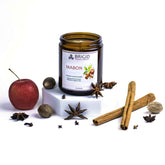The Life and Times of Saint Patrick
March is upon us, and that means many holidays important to our ancestors are on the way: the Spring Equinox arrives on March 20th, heralding Ostara and the coming of nature's rebirth. Yet on March 17th we'll be celebrating a very different holiday: Saint Patrick's Day, celebrating Ireland's famous patron saint, who just so happened to be one of history's most passionate and effective slavery abolitionists. Read on to discover the deep roots of this famous holiday, beyond the green beer!
Ireland's Patron Saint
Saint Patrick needs no introduction for most people, since his Saints’ Day on March 17th is a familiar celebration of Irish culture all over the world. You’ll find St Patrick’s Day festivals in many countries, including Japan, where it’s one of the country’s largest and most popular festivals, complete with bagpipes and Irish step dancing. Each year the holiday brings people together from all walks of life to celebrate Irishness in all its forms, whether or not they’re Irish.
Yet for all his popularity, the life of Saint Patrick himself is murky at best. According to his own autobiography, he was born somewhere in Britain around the beginning of the 5th century. At the same time the Romans were pulling their legions out of the country, leaving chaos and disorder behind. The son of an aristocratic Britano-Roman family, Patrick's life was thrown into chaos when a group of Irish raiders kidnapped him and took him across the Irish Sea as a slave.
Life In Ireland
Life was hard in Ireland at that time: placed as it is on the edge of the Atlantic Oean, the island suffered from many bouts of climate change, where torrential storms would wash acres of soil away, leaving only bedrock behind. Such was the fate of the Burren, a haunting landscape of exposed karst and ancient monuments
Many of Ireland's famous stone ring forts were built in this time, enclosures theorized to protect the homes of powerful chieftains in the area. Built near natural resources like fresh running water, the ring forts may have been a sign that Ireland had slipped into tyranny, where local chiefs would use force and their control of resources in an ever-changing landscape. Slavery, always alive in Celtic society, was widespread during this time, as Patrick had discovered. His work as a slave was hard: he would face weeks out on the range, watching his flock in the wet, cold Irish countryside.
Patrick's Life In Bondage
Like most of the details of Patrick’s life, where he was taken while in captivity isn’t certain. We know that he was taken by raiders who originated from Dal Riata, an Irish kingdom that extended from North Ireland far into western Scotland. Since the kingdom spanned the Irish Sea, Patrick may have ended up on either side, but tradition holds that he was taken to Ireland. Once there, he spent six years laboring as a shepherd for his captors, learning the Irish language and way of life as well.
When he’d been a boy, Patrick’s father had been a deacon of the church, but he described his family as lax and himself practically an atheist before his capture. While he toiling under slavery in Ireland, his faith returned to him as he dreamed of returning home, escaping from his forced labor. One day, Patrick heard the voice of God telling him that his captivity was soon to end, and to travel far south and find a boat waiting for him.

St. Patrick Escapes Slavery
Daringly fleeing his labors, Patrick escaped his captors and went on a great adventure, traveling hundreds of miles south until he finally came upon a boat somewhere on the southern Irish coast, just as he had been told he would find. At first, the captain of the boat would have nothing to do with Patrick, but he was eventually won over and allowed the young man aboard. They set sail, presumably for Britain, but it was not to be. Soon, Patrick and the whole crew were in trouble.
Lost At Sea
Despite Britain being a short trip across the Irish Sea, it took three days for Patrick’s boat to reach land, becoming hopelessly lost and possibly landing in the wilderness of northern France. The crew left the boat behind and wandered for weeks without supplies. When things looked bleak, Patrick received another vision from God claiming that their salvation was near; soon after, when the group found a pack of wild pigs to hunt, his reputation as a visionary had been established.
Patrick eventually made it home to Britain, his adventure having made him a profound Christian. He returned to France once again and studied for decades to become a Bishop before setting out for Ireland to convert the Irish, who he had seen suffer under brutal circumstances. Even as a slave, his experience in Ireland and with Irish culture had left him committed to what he considered his duty to save the souls of the Irish, including his own captors.
St. Patrick Returns to Ireland
Patrick's mind was already made up when he received another vision, this one of all the people of Ireland crying out to be saved. He promptly set sail and landed in Ireland somewhere near Wicklow, in the footsteps of the bishop Palladius, whose missionary work in Ireland had ended in failure.
The stories surrounding Patrick and his exploits across Ireland are too numerous to tell, but one of our favorites is his forty days of prayer atop Croagh Patrick, known as the Reek to locals. Towering over Westport in County Mayo, the mountain of Croagh Patrick is Ireland’s holiest mountain. On this mountaintop he was said to have done battle with flocks of nefarious birds, such as the ones commanded by the Morrigan, and, legend has it, defeated Lugh himself in magical combat. Whether or not these battles took place, the faithful have climbed the Reek for thousands of years, before and after Patrick's time.

Climbing the Reek
When we made the climb up Croagh Patrick, we encountered a fellow climber who told us that in the days before Saint Patrick, the Druids would ascend Croagh Patrick barefoot, starting out before dawn to scramble over the sharp rocks. While we probably won’t be doing it the Druidic way, we highly recommend the climb, especially as there are many volunteers now keeping the pilgrimage route clear of the mountain’s infamously slippery stones.
Patrick: Druid, Wizard, Saint?
The story of Patrick once he arrived in Ireland is full of wild tales, such as his battles with local Druids, kings, monsters, giants, and sometimes even the gods themselves. In one famous story of his efforts to convert the powerful King Laoghaire, he takes part in a battle of magical arts full of wild imagery. Patrick, like many of the church’s early missionaries, often seems to be a wizard as well as a holy man.
Yet the real-world politics of the time were also of great interest to Patrick. Under the tyranny of the chiefs, both wives and second sons (and on down the line) were essentially forced out of the political arena. Patrick worked had to convert just these groups, so that they would begin applying pressure directly to the chiefs themselves. By working to convert Ireland from the bottom up, allying with those who felt powerless and emboldening them to stand up for themselves, Patrick began the only bloodless conversion in Christianity's history. In doing so, he sowed the first seeds of the gradual decline of slavery in Ireland.
The Rise of Christianity in Ireland
Patrick’s lifelong mission would mark the beginning of the decline of Irish paganism, but the story is more complex than it may seem. One of his famous myths, that he banished all the snakes from Ireland, is simply untrue if taken literally; there never were any snakes in Ireland, as the climate has never been warm enough to sustain a serpent population. Instead, the snakes are popularly interpreted as a metaphor for the Druids and priests of the pagan Irish religion.
Yet even in his own writing, Patrick never mentioned snakes, shamrocks, Druids, or anything of the sort. Rather than crusading against the Druids, his historical life was probably full of court intrigue as he navigated the local politics of the Irish clan system, converting the sons, daughters, and even wives of Irish kings in a bid to change Ireland from the ground up. He spent much of his life founding real churches and monasteries by the hundreds all over Ireland, though many have been associated with him purely because of centuries of church politics.
Patrick and the Druids
When it comes to his historical warfare against the Druids, even that is not clearly the case. Rather than open hostility towards all Druids, Patrick seems to have actively recruited from within their ranks, which may be a sign that Patrick's version of Christianity was seen as revitalizing the core Druidic beliefs. Many early Irish missionaries show clear Druidic influence: Saint Ciaran, for instance, is known as Ciaran of the Animals, as his first parishioners were wild animals who helped him build his first refuge, the exact behavior you'd see in a freshly-converted Druid, or someone from their lineage.
Like any mythic figure, Patrick was a complex character. His real life saw him and his monastic orders coexisting alongside Irish paganism for centuries, rather than culminating in an explosive showdown. Yet his missionary work cemented the Christian future of Ireland, and in doing so, he sealed his own legacy as Ireland’s patron saint and an irreplaceable part of Irish identity.









